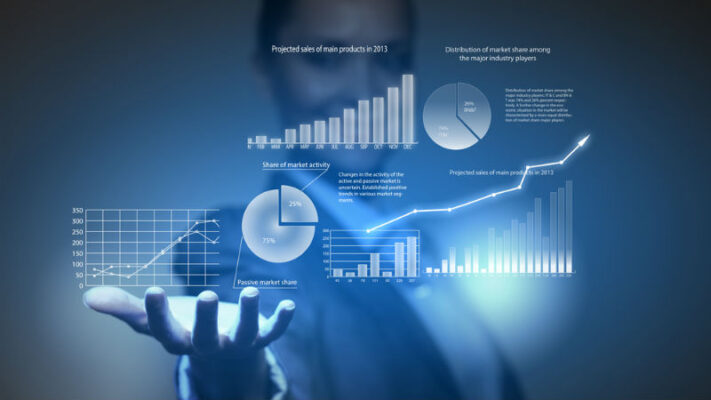
5 Ways Predictive Data Analytics Is Making Lives Easier
Last updated on April 16th, 2024 at 11:09 am
We live in an era where the surroundings are brimming with data. Today, accurate data analytics is critical for any business to stay on a competitive edge and get more insight into the consumer’s lifestyles and the industry’s changing trends. Predictive analytics can help organizations identify trends using their existing data for more accurate planning, forecasting, and better decision-making. Data analytics reports can help organizations analyze and evaluate business processes.
Every company wants to foresee whether the demand for their goods will increase in future, whether the property they are developing will depreciate or appreciate in future or what would be the estimated profit on their newly—launched fragrance. Using the power of predictive analytics, they can better predict all this information with a minimal error margin.
1. Predictive Analytics In Retail
In the retail industry, using predictive analytics, companies can analyze the behavior of their customers. It can help companies gain insights that were never possible before. For example, identifying the trends and preferences of high-value customers, their motives behind making a purchase at your store, their buying patterns and identifying the best channels to market them. Predictive analytics in retail can help retailers provide personalized in-store services using their consumers’ buying and browsing history collected from point of sales, loyalty cards, in-store sensors, and CCTV cameras.
2. Predictive analytics In Insurance
The insurance industry can harness the power of predictive analytics for better pricing and risk anticipation, identifying high-risk clients and clients with a high risk of cancellation or maybe customers who require extra attention. By using data collected from various data sources and applying predictive analytics algorithms on it, insurers can better identify the risk of fraud associated with any claim. The data can be collected using agent interactions, telematics, customer interactions, smart homes, and social media to predict future risks and opportunities and have better relations with clients.
3. Predictive Analytics In Property
In real estate, predictive analytics can be used to predict the location’s trends with regards to appreciation and depreciation in the future. You can decide if the property you intend to buy in Dubai Marina Apartments is likely to be more profitable in future or in how many years is one of your Arabian Ranches villas for sale more likely to give you the best return on investment. You can also derive future rental yields and reduce the risk.
4. Predictive Analytics In Finance
Financial organizations are using predictive analytics to predict who their most profitable customers are. They can also look at trends to identify slow payers, detect and address system issues before they happen and improve cash flow management. This can also give predictions of futuristic sales to better analyze the demands of their products. Another usage of predictive analytics in financial bodies is to recover overdue payments faster by notifying collections departments when customers deviate from their past payment patterns.
5. Predictive analytics In Banking
Banks using predictive data analytics are more capable of solving problems and provide more security to the customer. Banks can use predictive analytics to anticipate the creditworthiness of their customers. For example, how likely is a customer to miss a payment in the next 30 days? The result is based (partially) on analyzing past payment patterns of similar customers. Banks can also send notifications to customers to help them manage their finances. For example, a customer’s mortgage payment is to be collected on the 10th of every month and if they are out of funds in their account, the bank can send them a notification, so they can arrange the amount in time.
Read Dive is a leading technology blog focusing on different domains like Blockchain, AI, Chatbot, Fintech, Health Tech, Software Development and Testing. For guest blogging, please feel free to contact at readdive@gmail.com.
